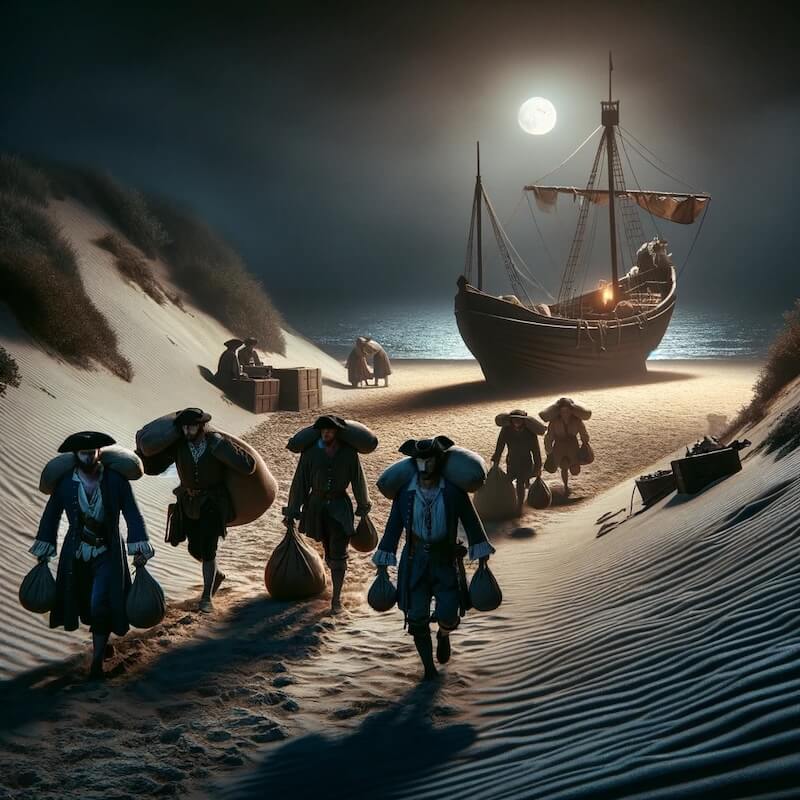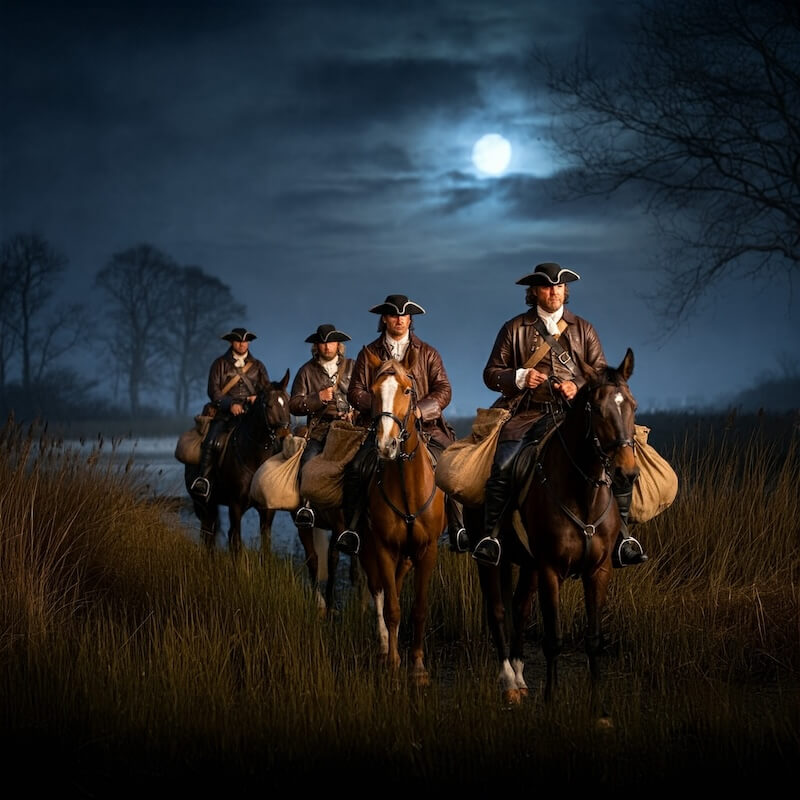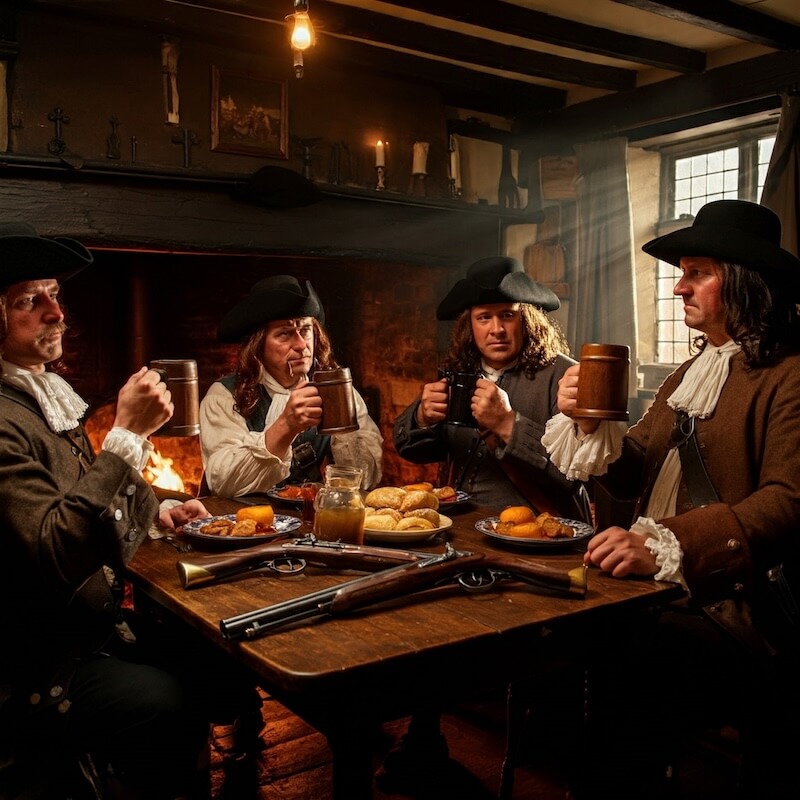
Whispers on the wind, narrow cobbled streets, hidden alleyways, and lights flickering at sea… Smuggling tales are woven into the very fabric of our historic coastline. From secret cellars to attics connected by tunnels, let your imagination run wild as you follow in the footsteps of those who once made fortunes dodging the law.
Walk the same paths as the infamous smugglers, exploring the villages and towns whose wealth was built on the sly dealings of the smuggling gangs. And if you’re a fan of stories, you might be surprised where some of your favourite books and writers drew their inspiration!

Five and Twenty Ponies… And the Smugglers Too
Close your eyes, and you can almost picture the shadowy figures bringing their contraband ashore at Camber Sands—Brandy for the parson, ‘baccy for the clerk, lace for a lady, and letters for a spy… The thrill of the chase is alive in every corner of this coast! Feel the excitement as you follow in their footsteps and uncover the secrets they left behind with your own break beside the sea.
The Kent and East Sussex coast, so tantalizingly close to the Continent, was prime smuggling territory. Nowhere more so than the atmospheric Romney Marsh, where the flat lands still feel far removed from the hustle of everyday life. The iconic Romney Marsh sheep still graze as they have for centuries, but in the 13th century, smuggling wool—or “owling”—was the game. Smugglers, known as ‘Owlers,’ made fat profits ferrying fleeces to the Continent, dodging hefty taxes on wool exports.
Visit their old haunts, including medieval marsh churches like Snargate, where you’ll find a wall painting of a ship—a secret signal to smugglers that it was safe to stash their goods. And don’t miss the Woolpack Inn near Brookland, a former smugglers’ stronghold. These smugglers, nicknamed ‘owlers’ for their night-time hooting, came from all walks of life. Even the local vicar might have had a double life, as captured in Russell Thorndyke’s 1915 novel Dr Syn.
Rye – Once the Smuggling Capital of England 🏴☠️
Imagine the ancient ports of Rye, Winchelsea, and Hastings in the 17th and 18th centuries—pirates and smugglers openly flaunting their ill-gotten goods, armed to the teeth and daring anyone to cross them. The inns and taverns would have been filled with gang members, sharing tales of their latest exploits while customs officials turned a blind eye—often for a generous bribe, of course!
Rye, in particular, was known as the ‘smuggling capital of England’ in the 18th century. With its customs officers conveniently looking the other way, smuggling flourished, and the town’s prosperity grew thanks to the contraband flowing through its ports. With corrupt officials and the smugglers keeping everyone happy, charges were often “mysteriously” dropped, and Rye thrived.

Follow the Footsteps of the Infamous Hawkhurst Gang… 🔥
The notorious Hawkhurst Gang ruled the smuggling scene with a ruthless iron fist. They brazenly gathered at the Mermaid Inn in Rye, where they drank, smoked their pipes, and casually laid their pistols on the table. Nobody dared interfere with them—they were the mafia of the 18th century.
But their influence extended beyond intimidation. The Hawkhurst Gang offered employment to locals after the wool and iron industries declined, and they kept parsons and townsfolk happy with duty-free tea, brandy, and tobacco.
If you’re ready for an adventure, book a smugglers break with us, and stop by the Rye Heritage Centre and learn more about the smuggling gang’s nefarious deeds, how they operated and how fearsome they truly were.
Stay with Us and Choose Your Side!
Want to live like a smuggler? Our charming Smugglers Cottages at Whitesand are your perfect hideaway. Or, if you’d rather join the King’s men, set up base at Coastguard Cottages and hunt down those sneaky smugglers!
Which side will you choose? Either way, adventure awaits beside the sea. 🌊




Leave a Reply